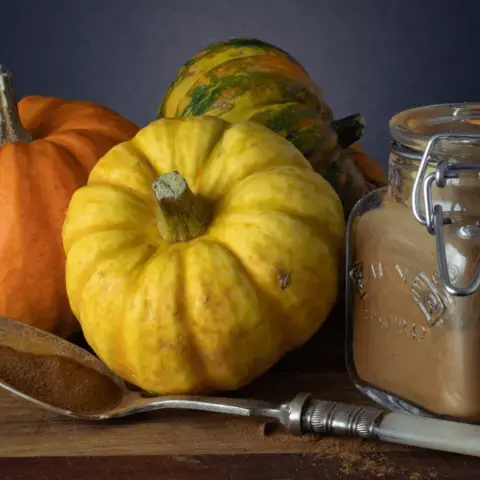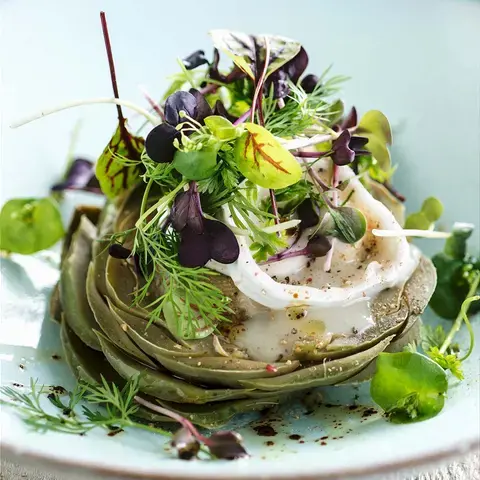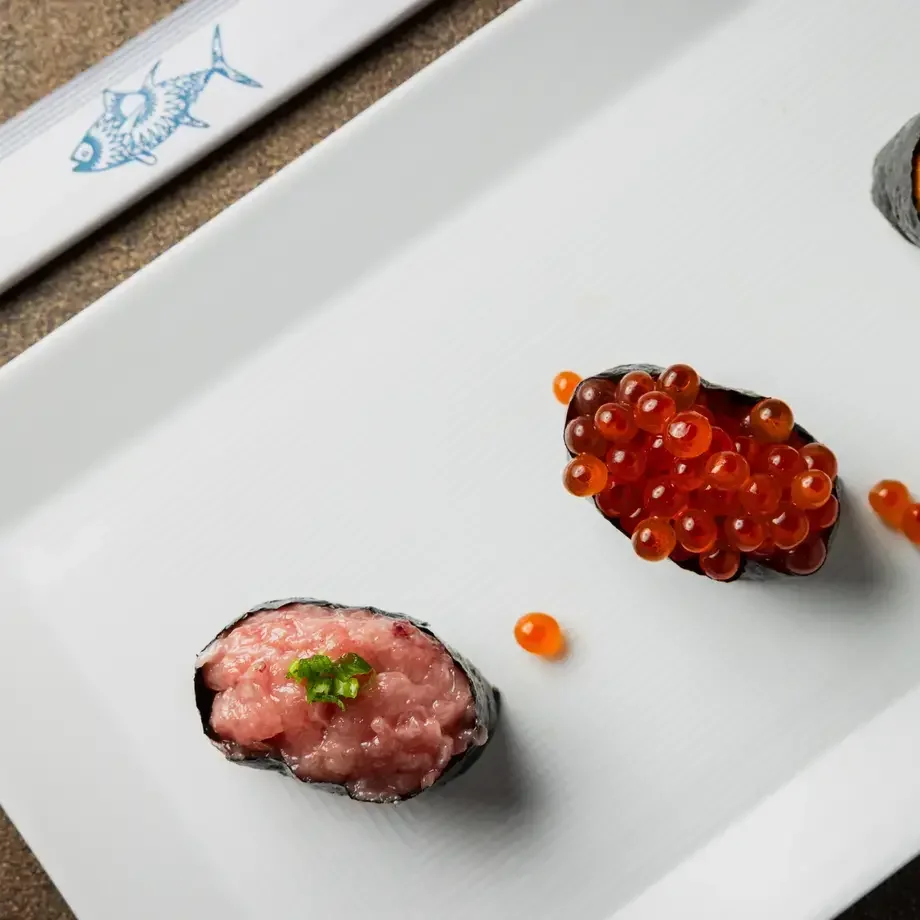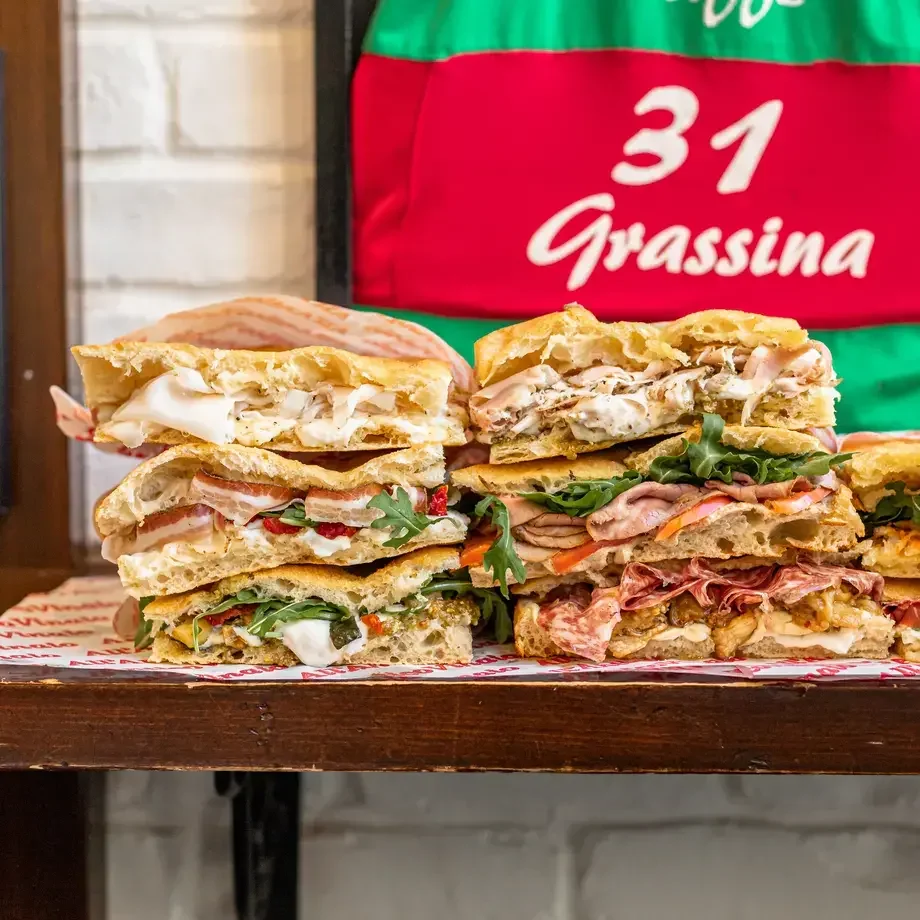The fact that this dish is also known as vitel tonné may be misleading: veal with tuna sauce (vitello tonnato in Italian) is an authentic and traditional Italian recipe that has been copied worldwide. The original version calls for slices of boiled veal covered with a sauce of tuna, anchovies, mayonnaise and capers.
Any research into its origins will lead us to the North of Italy but the most plausible theory is that it comes from Piedmont: it has now been ascertained that the recipe was documented by Pellegrino Artusi in the mid nineteenth century. Prior to that date, there are traces in some recipe books of “rested veal”, that is to say, meat that is boiled, sliced and left to rest after being covered with a little sauce containing anchovies. In actual fact, this dish reveals an extremely modern fish-meat combination despite the fact that it dates back as far as the late Middle Ages when in Piedmont – on the doorstep of Liguria and therefore close to the sea – anchovy traders were common figures. At that time, salt was such a precious commodity that it led the merchants of North Italy to go as far afield as the Rhone delta to buy it cheaply and to bring it into the country concealed between layers of anchovies which, in this manner, could be preserved for lengthy periods of time.
This is why the main ingredient of this famous sauce was very common in many Piedmont recipes. In brief, one of the most copied Italian sauces in the world originally had nothing to do with mayonnaise or tuna, but did contain plenty of anchovies.
Today, veal with tuna sauce is also very popular in Argentina, where it is considered a Christmas dish, while in Hispanic countries, they add crema de leche. The traditional Italian version may be eaten warm or cold, according to the time of year and, like all most loved Italian recipes, it has been reinterpreted by great chefs. Piedmont-born Davide Scabin serves the slices of meat rolled up and filled with sauce. Carlo Cracco resorts to tradition and insists on “no mayonnaise”. An interesting version is that of chef Heinz Beck for the restaurant La Pergola in Rome who turns the ingredients upside down: his “tuna with veal sauce” is a grilled tuna steak with herb flavoured veal gelatine. Jamie Oliver takes the original recipe but adds two boiled eggs instead of the usual mayonnaise. Alain Ducasse could not resist putting it on the menu of his French Riviera restaurants and Alain Pégouret, who trained under Robuchon, considers it a forte of his Laurent restaurant in Paris.
Here are a few hints for recognizing or preparing an excellent veal with tuna sauce (here you find the full recipe):
• The most suitable meat for making this dish is called magatello in northern Italy; it is a lean cut from round of milk-fed veal or veal. Sometimes, turkey meat or loin of pork is used to prepare a more economical version.
• The slice of meat must not look greyish but should be of an attractive pink colour. Haute cuisine prefers not to stress the meat fibre with lengthy boiling and opts for the sous-vide cooking method (in a vacuum sealed pack).
• The sauce must be a perfect harmony of flavours. If too salty, it means they have gone overboard with the anchovies. The sauce should not be mayonnaise-based but if you do decide to use it, go for home-made.
• Drain the tinned tuna thoroughly before putting it into the blender and choose the water-packed rather than the oil-packed type.
• Purists hand cut the meat slices somewhat thickly using a knife rather than a slicing machine.
• The secret lies in getting the sauce quantity right: not too little, which would leave the meat dry and not too much since this would overwhelm the palate.
• The leftover meat stock is an excellent ingredient for diluting the sauce. Just add it gradually to the other contents in the blender. This dish is best served at room temperature.
And finally, follow the advice of Pellegrino Artusi ”Filter the meat stock and use it to make a risotto”.











